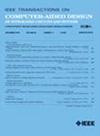硬件的分层形式化验证
IF 2.9
3区 计算机科学
Q2 COMPUTER SCIENCE, HARDWARE & ARCHITECTURE
IEEE Transactions on Computer-Aided Design of Integrated Circuits and Systems
Pub Date : 2025-02-12
DOI:10.1109/TCAD.2025.3541567
引用次数: 0
摘要
由于状态空间爆炸问题,扩展硬件形式验证(FV)一直是一个挑战。在本文中,我们介绍了一种自下而上的验证方法,该方法通过在层次结构中的每个级别使用合理的抽象来利用设计层次结构,将整个FV问题分解为一组更小、更易于管理的FV任务。我们使用最近提出的指令级抽象(ILA)作为设计层次结构的每个级别的完整规范。然后,我们使用基于ila的验证方法来检查在该级别上组成的模块的正确性。ILA规范包括每个模块的接口规范和用于验证正确的模块间通信的接口检查。这种方法通过以下保证实现组合验证:如果每个硬件组件细化其ILA规范并通过接口检查,则寄存器传输级组合细化ILA组合。然后,我们将展示这种组合验证方法如何促进自下而上的分层验证方法,其中一个级别的规范充当下一个更高级别的实现。我们通过几个案例研究展示了我们方法的可扩展性,包括两个深度学习加速器(FlexASR和NVDLA)中的复杂模块,其中验证无法在平面设计上完成。本文章由计算机程序翻译,如有差异,请以英文原文为准。
Hierarchical Formal Verification of Hardware
Scaling hardware formal verification (FV) has been an ongoing challenge due to the state space explosion problem. In this article, we introduce a bottom-up verification methodology that leverages design hierarchy by using sound abstractions at each level in the hierarchy to decompose the overall FV problem into a set of smaller, more manageable FV tasks.We use the recently proposed instruction-level abstraction (ILA) as a complete specification at each level of the design hierarchy. We then utilize ILA-based verification methods to check correctness of modules composed at that level. The ILA specification includes an interface specification for each module and interface checks for verifying correct intermodule communication. This approach enables compositional verification with the following guarantee: if each hardware component refines its ILA specification and passes the interface checks, then the register-transfer level composition refines the ILA composition. We then show how this compositional verification methodology facilitates a bottom-up hierarchical verification approach, where the specification at one level serves as the implementation at the next higher level. We demonstrate the increased scalability of our methodology through several case studies, including complex modules in two deep learning accelerators (FlexASR and NVDLA), where verification fails to complete on the flat designs.
求助全文
通过发布文献求助,成功后即可免费获取论文全文。
去求助
来源期刊
CiteScore
5.60
自引率
13.80%
发文量
500
审稿时长
7 months
期刊介绍:
The purpose of this Transactions is to publish papers of interest to individuals in the area of computer-aided design of integrated circuits and systems composed of analog, digital, mixed-signal, optical, or microwave components. The aids include methods, models, algorithms, and man-machine interfaces for system-level, physical and logical design including: planning, synthesis, partitioning, modeling, simulation, layout, verification, testing, hardware-software co-design and documentation of integrated circuit and system designs of all complexities. Design tools and techniques for evaluating and designing integrated circuits and systems for metrics such as performance, power, reliability, testability, and security are a focus.

 求助内容:
求助内容: 应助结果提醒方式:
应助结果提醒方式:


